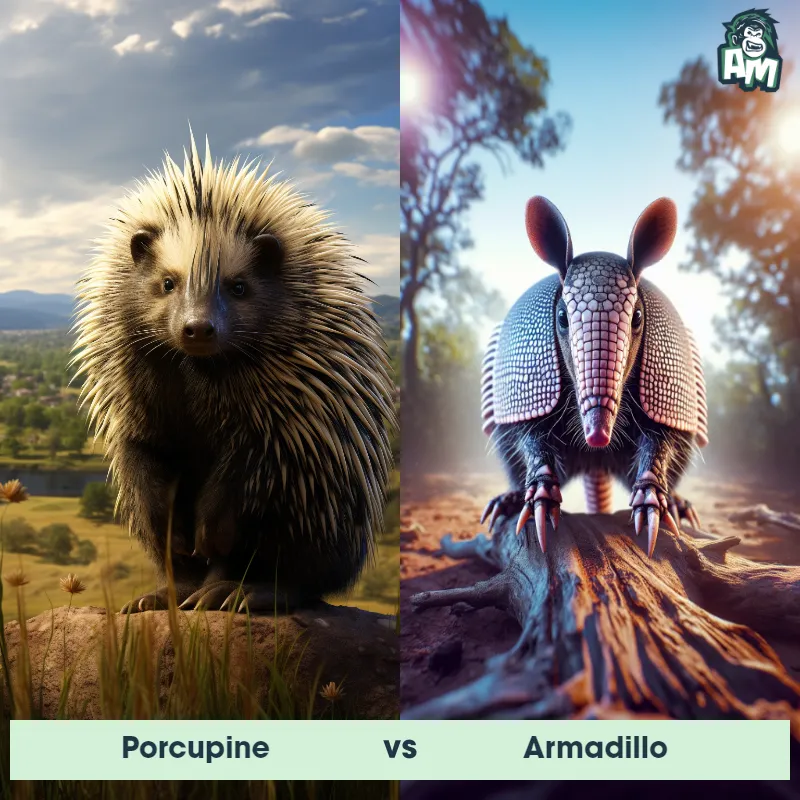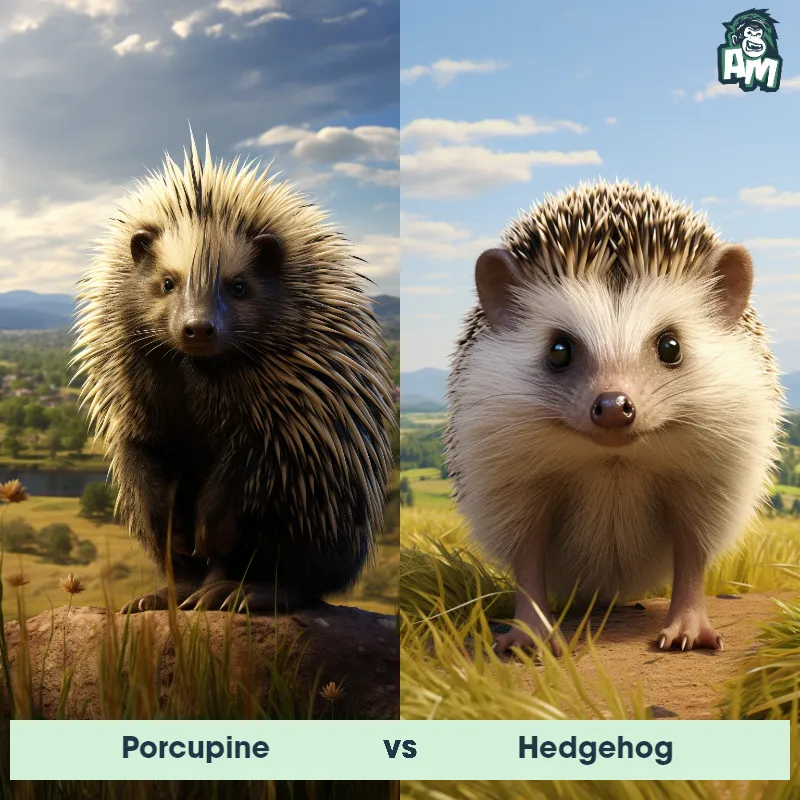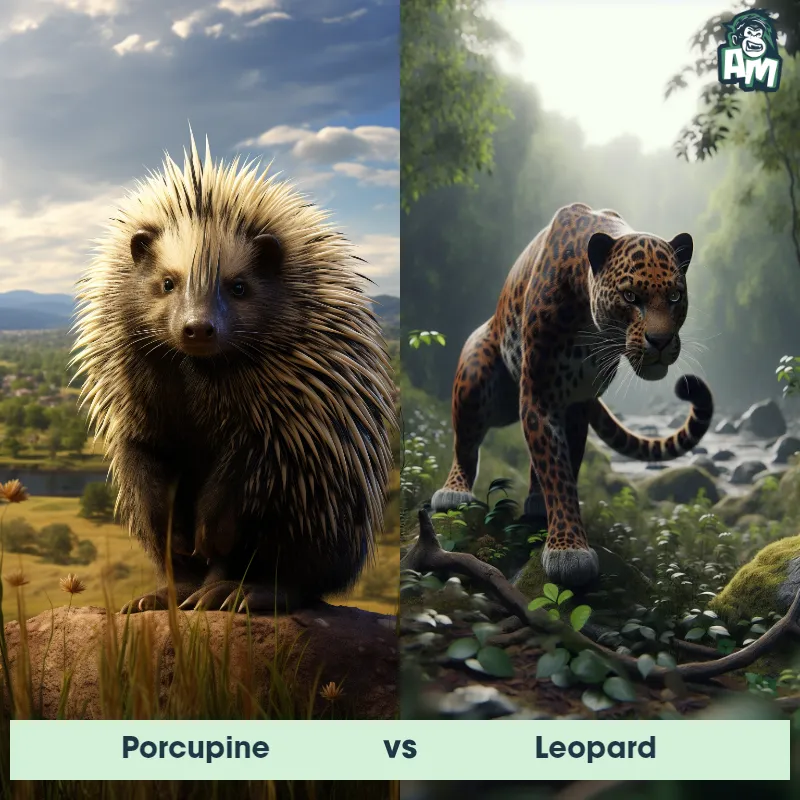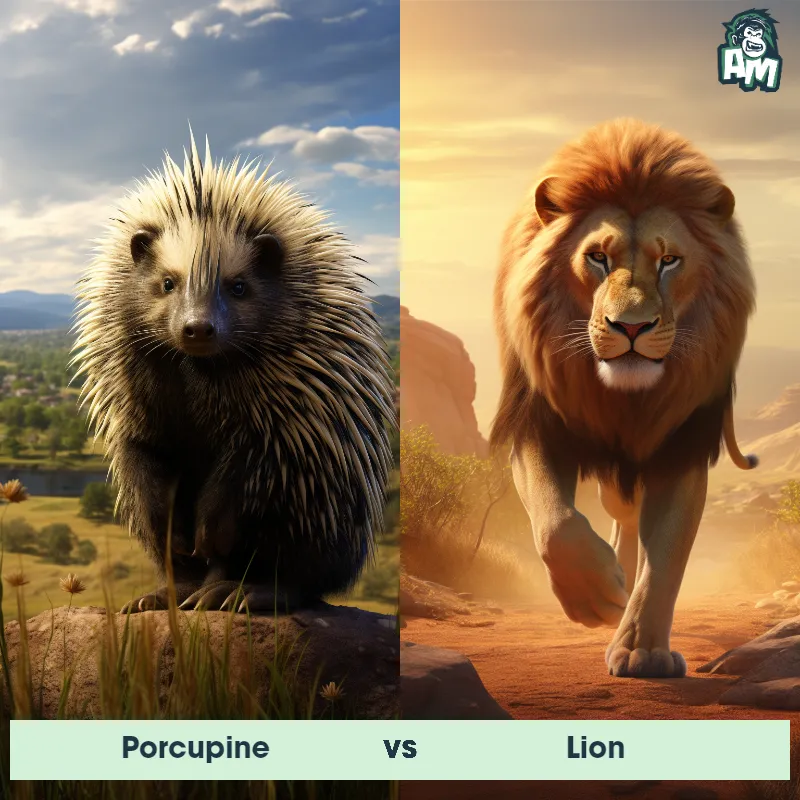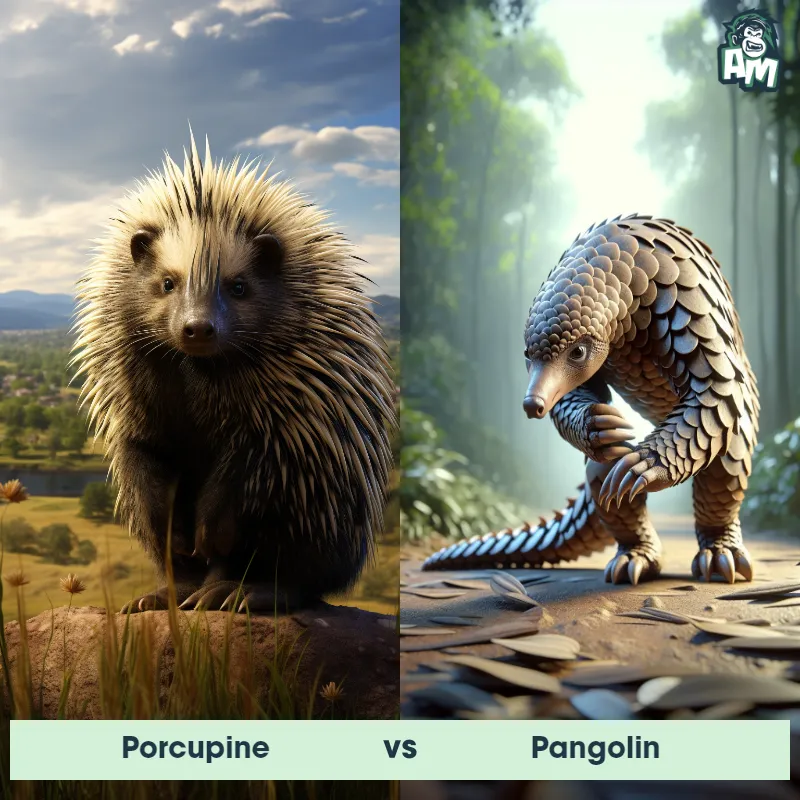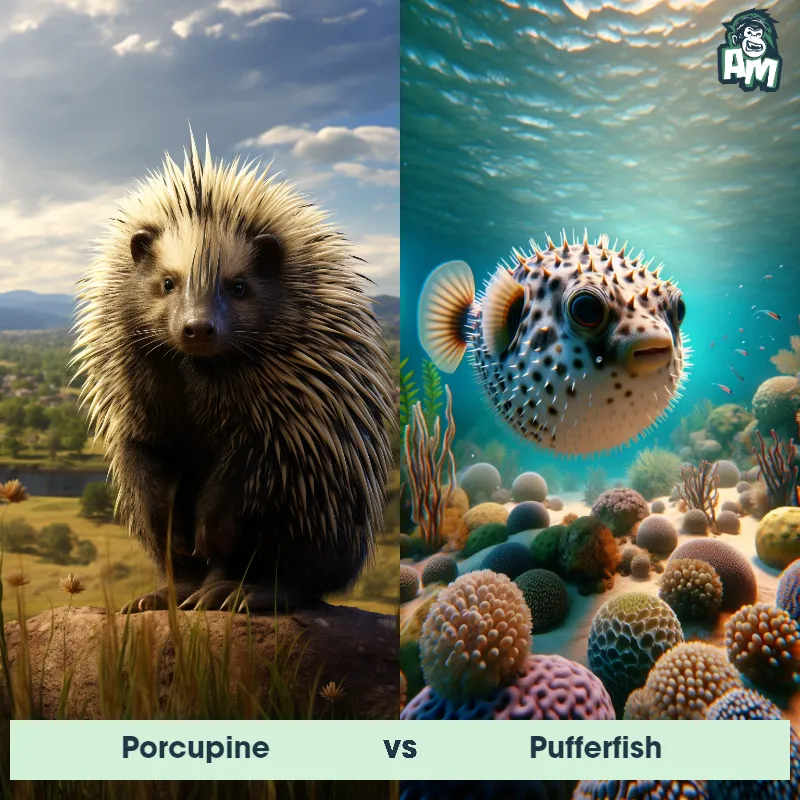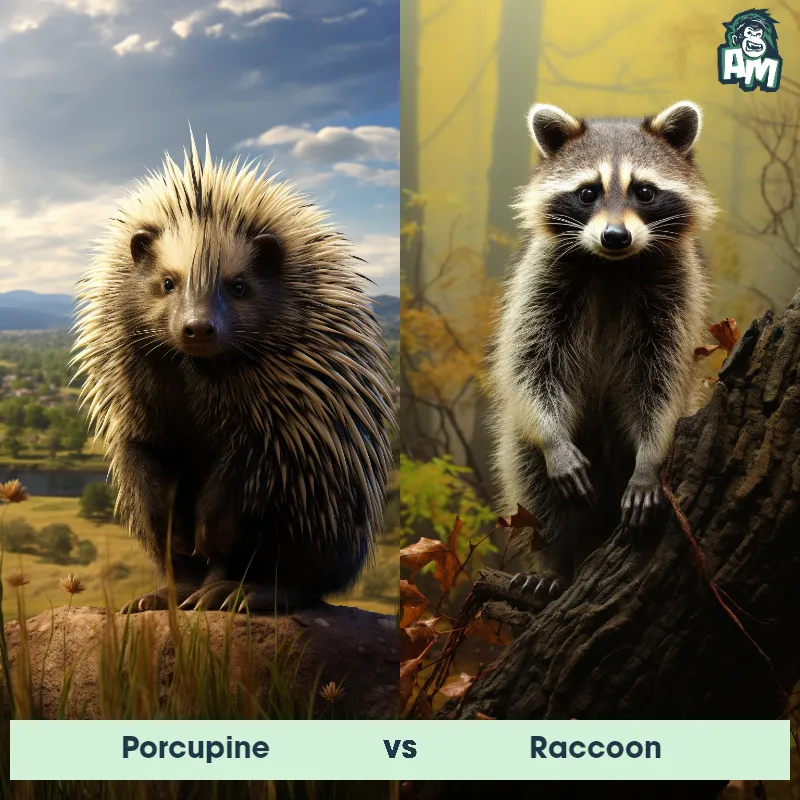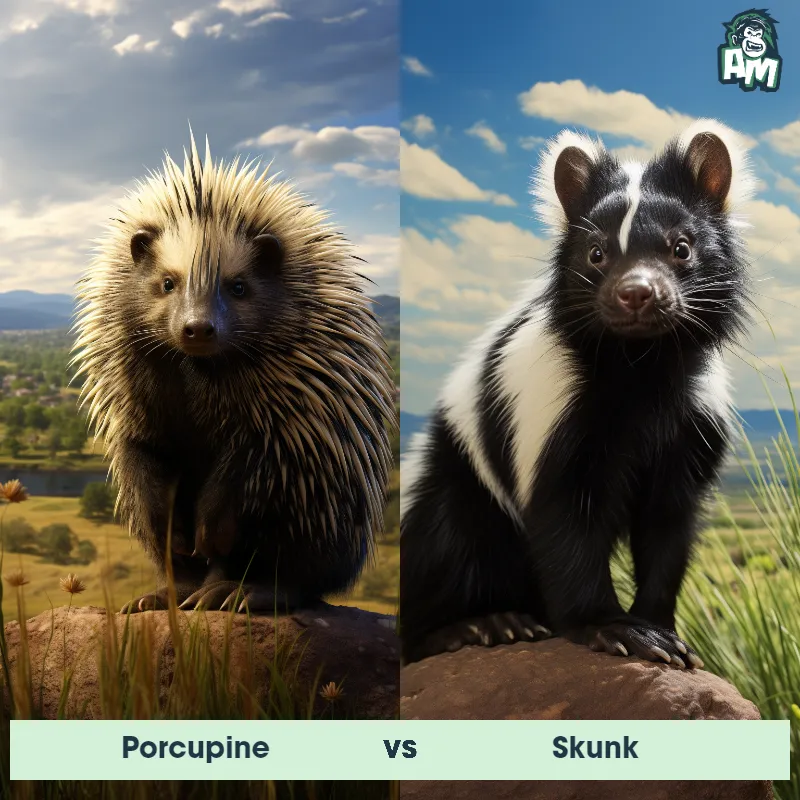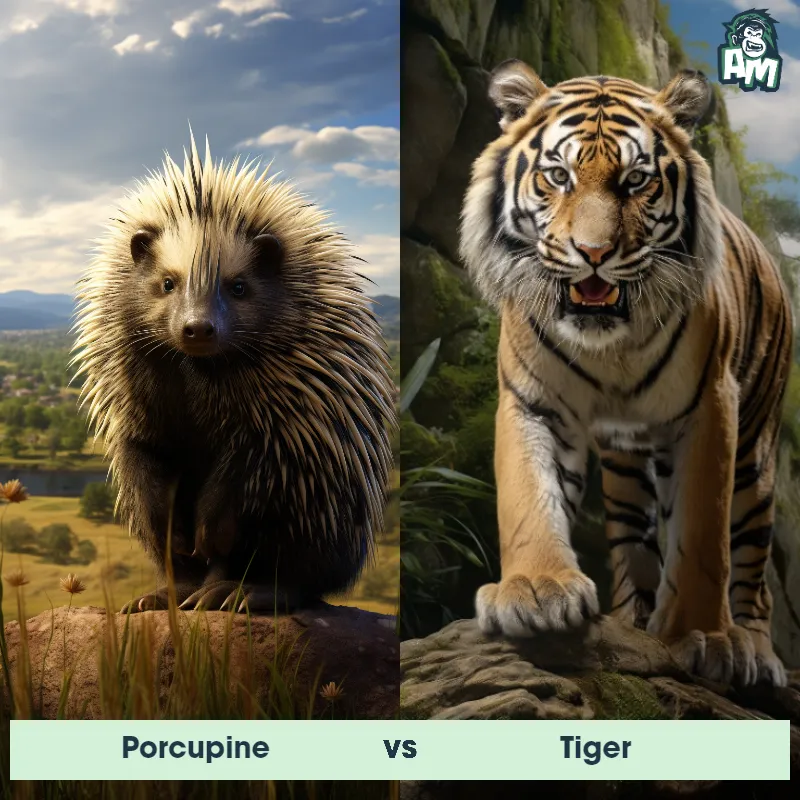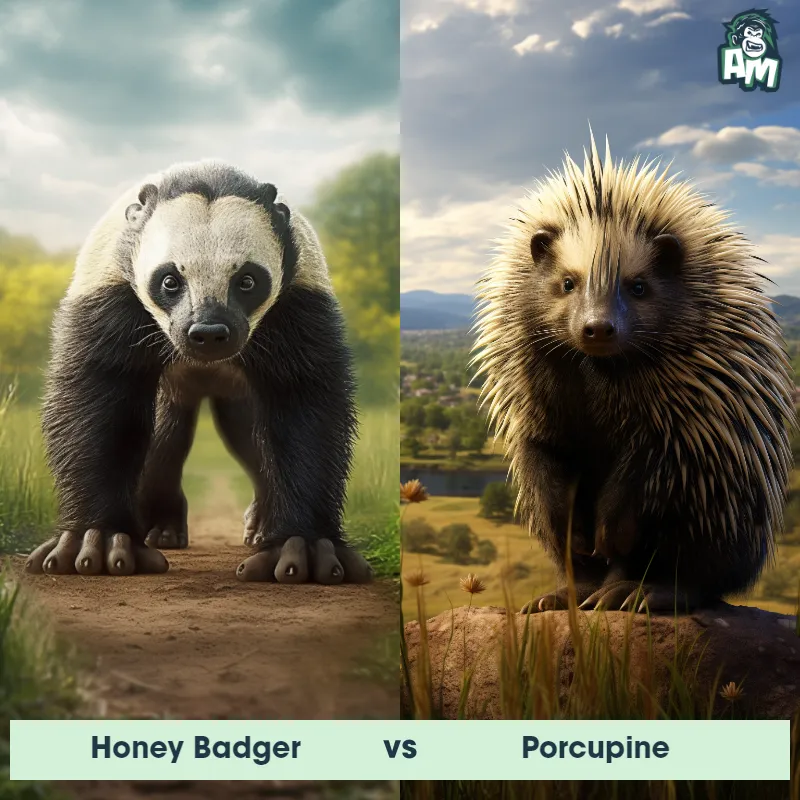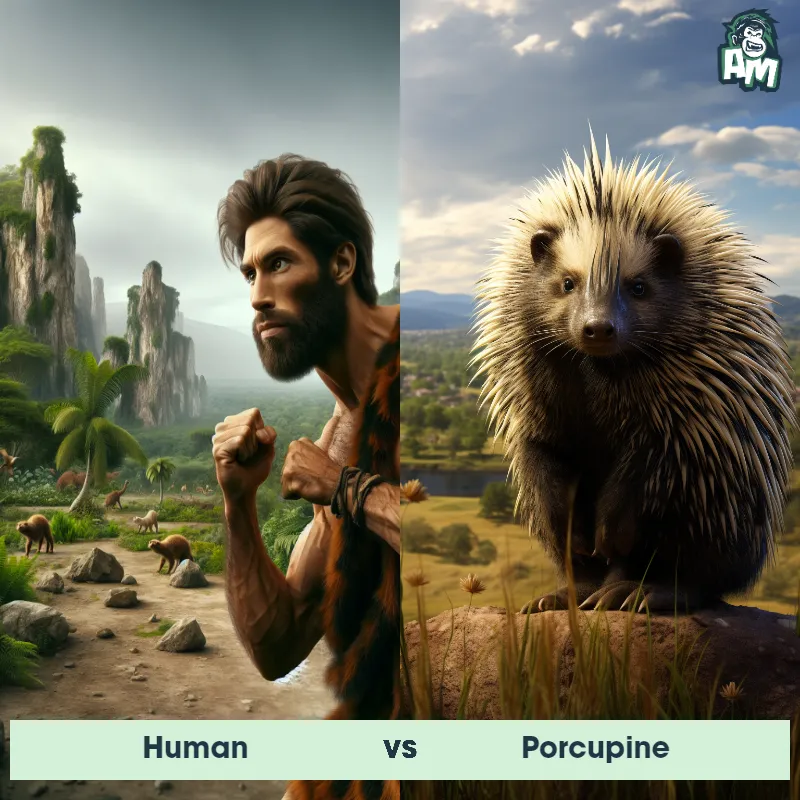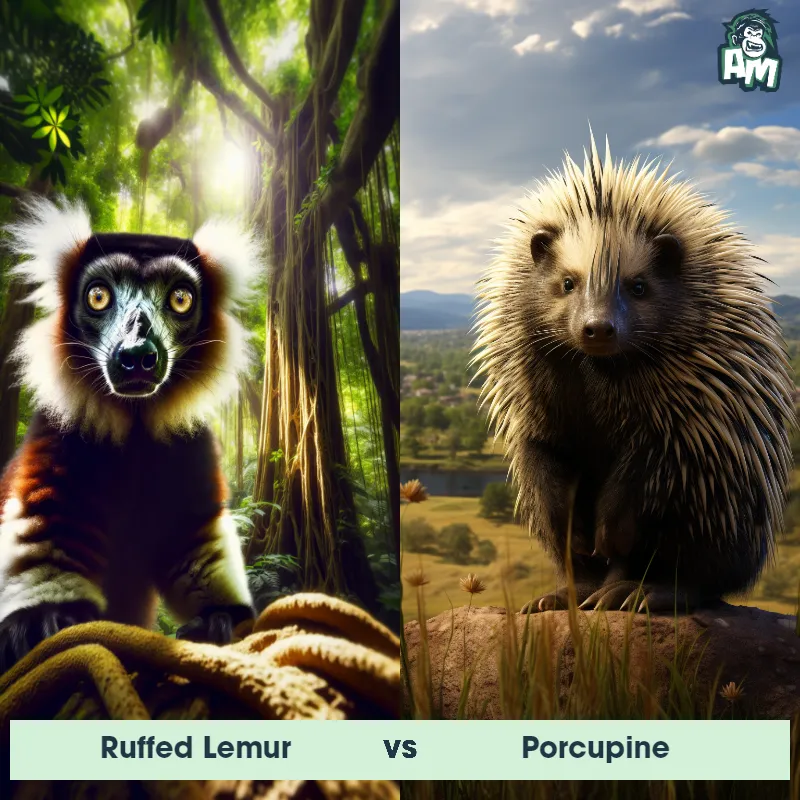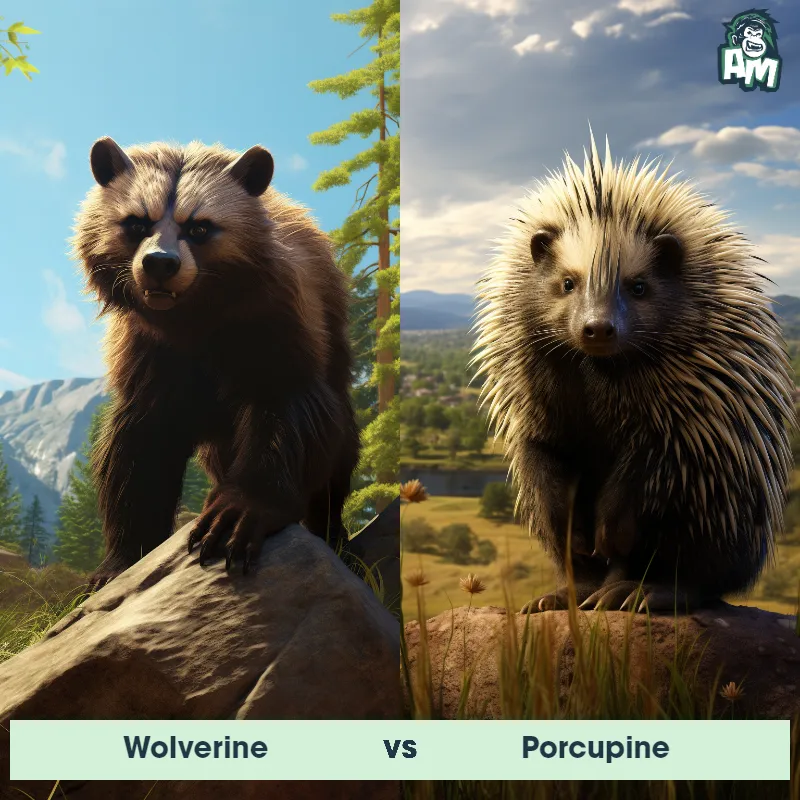The Porcupine
The Porcupine, also known as the African crested porcupine, is a large rodent native to sub-Saharan Africa. Covered in sharp, barbed quills, which can reach up to 20 inches in length, this nocturnal animal has a stout body and a short tail. The Porcupine's quills are its main line of defense, which it raises when threatened, creating an intimidating display. Despite its prickly exterior, the Porcupine is herbivorous, feeding on a range of plants, roots, and bark. It lives in underground burrows and is a solitary creature, only socializing during the mating season.
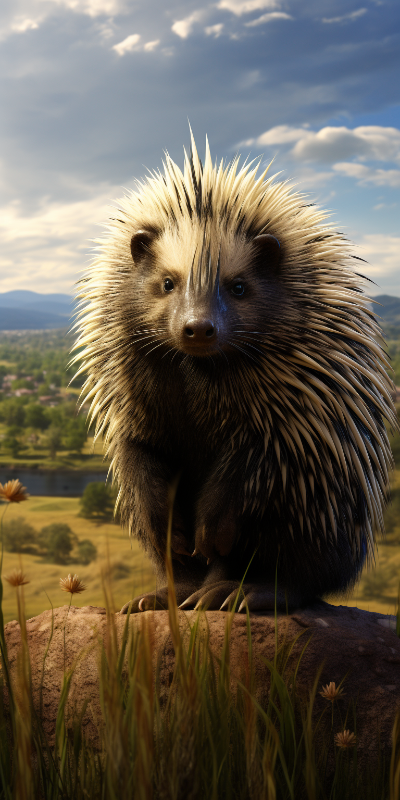
| Porcupine | |
|---|---|
| Size | 25-36 inches (63.5-91.4 cm) |
| Weight | 12-35 lbs (5.4-15.9 kg) |
| Speed | 2mph (3.2km/h) |
| Key Strength | Sharp quills for protection |
| Biggest Weakness | Slow movement |
| Scientific Name | Erethizon dorsatum |
| Family | Erethizontidae |
| Habitat | Forests, deserts, grasslands |
| Geography | North and South America, Africa, Europe, and Asia |
| Diet | Leaves, bark, and stems of trees |
| Lifespan | 5 years - 10 years |

The Porcupine
The Porcupine, also known as the African crested porcupine, is a large rodent native to sub-Saharan Africa. Covered in sharp, barbed quills, which can reach up to 20 inches in length, this nocturnal animal has a stout body and a short tail. The Porcupine's quills are its main line of defense, which it raises when threatened, creating an intimidating display. Despite its prickly exterior, the Porcupine is herbivorous, feeding on a range of plants, roots, and bark. It lives in underground burrows and is a solitary creature, only socializing during the mating season.
Fun Fact: Porcupines are excellent climbers and are often found in trees, even scaling heights of up to 30 feet.
| Porcupine | |
|---|---|
| Size | 25-36 inches (63.5-91.4 cm) |
| Weight | 12-35 lbs (5.4-15.9 kg) |
| Speed | 2mph (3.2km/h) |
| Key Strength | Sharp quills for protection |
| Biggest Weakness | Slow movement |
| Scientific Name | Erethizon dorsatum |
| Family | Erethizontidae |
| Habitat | Forests, deserts, grasslands |
| Geography | North and South America, Africa, Europe, and Asia |
| Diet | Leaves, bark, and stems of trees |
| Lifespan | 5 years - 10 years |
Porcupine Matchups
We use AI to simulate matchups between the Porcupine and other animals. Our simulation considers size, strength, and natural predatory behaviors to determine the most likely outcome.

Can't find the Matchup you want?
Create Your Own MatchupPorcupine: Diet, Predators, Aggression, and Defensive Behaviors
What do Porcupines eat?
Porcupines are herbivores and primarily feed on leaves, twigs, and green plants. They have a special affinity for bark, especially during the winter months when other food sources may be scarce. Porcupines have been known to climb trees to reach their favorite food, which includes aspen, willow, and pine trees.
Do Porcupines have any predators?
Despite their sharp quills, Porcupines have some natural predators. Common predators of Porcupines include cougars, coyotes, bobcats, and fishers. However, many animals have learned to avoid the Porcupine's quills by flipping them over and attacking their unprotected bellies.
Are Porcupines aggressive?
Porcupines are generally not aggressive animals and prefer to avoid confrontation. They may become aggressive if they feel threatened or cornered, but their first instinct is usually to retreat and seek safety in a tree or burrow.
Do Porcupines fight amongst themselves?
Male Porcupines may sometimes fight during the breeding season when competing for a mate. These fights can be intense but rarely result in serious injuries since Porcupines have evolved to rely on their quills for defense rather than physical combat.
How do Porcupines defend themselves?
Porcupines are well-known for their defense mechanism of sharp quills. When threatened, a Porcupine will raise its quills and may stamp its feet or even lash out with its tail to deter predators. If the predator persists, the Porcupine can release its quills, which easily detach upon contact and become embedded in the predator's skin, causing pain and discomfort.
What is a Porcupine's biggest weakness in a fight?
While Porcupines are well-equipped to defend themselves with their quills, their biggest weakness in a fight is their slow movement and inability to outrun predators. Porcupines are not fast animals and rely on their defensive mechanisms to protect themselves, making them vulnerable if caught unaware or unable to escape quickly.
Fun Fact: Porcupines are one of the few mammals that possess quills, which are specialized hairs made of keratin.
Fun Fact: Contrary to popular belief, porcupines cannot shoot their quills, but they can detach them easily upon contact with a predator, making retrieval difficult.



